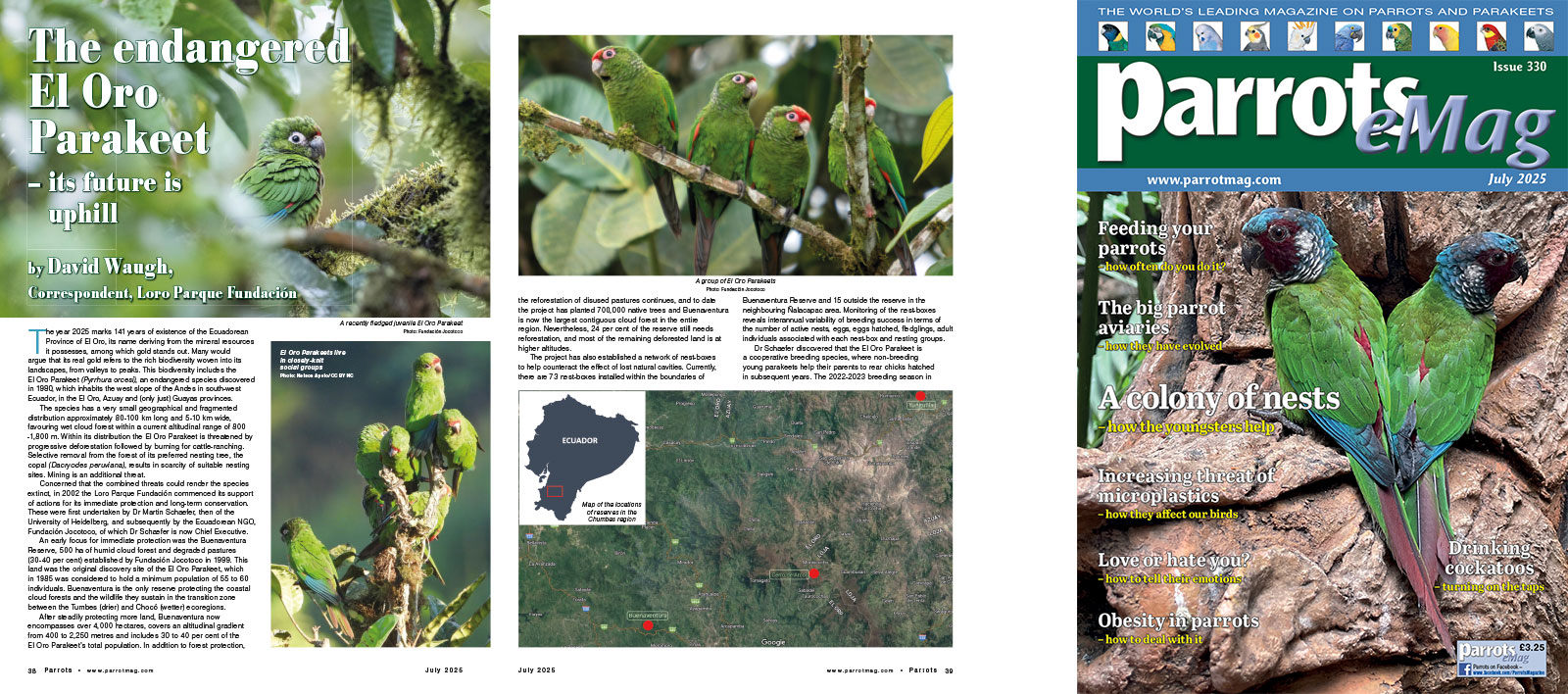
By David Waugh, Correspondent, Loro Parque Fundación
The year 2025 marks 141 years of existence of the Ecuadorean Province of El Oro, its name deriving from the mineral resources it possesses, among which gold stands out. Many would argue that its real gold refers to the rich biodiversity woven into its landscapes, from valleys to peaks. This biodiversity includes the El Oro Parakeet (Pyrrhura orcesi), an endangered species discovered in 1980, which inhabits the west slope of the Andes in south-west Ecuador, in the El Oro, Azuay and (only just) Guayas provinces.
The species has a very small geographical and fragmented distribution approximately 80-100 km long and 5-10 km wide, favouring wet cloud forest within a current altitudinal range of 800 -1,800 m. Within its distribution the El Oro Parakeet is threatened by progressive deforestation followed by burning for cattle-ranching. Selective removal from the forest of its preferred nesting tree, the copal (Dacryodes peruviana), results in scarcity of suitable nesting sites. Mining is an additional threat.
Concerned that the combined threats could render the species extinct, in 2002 the Loro Parque Fundación commenced its support of actions for its immediate protection and long-term conservation. These were first undertaken by Dr Martin Schaefer, then of the University of Heidelberg, and subsequently by the Ecuadorean NGO, Fundación Jocotoco, of which Dr Schaefer is now Chief Executive.
